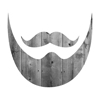Hello. I have been looking for a supplier to engrave cutting boards. I have found very few. But not the type of cutting board I am looking for. This weekend I want to attempt to make my own cutting board. I think I am going to try Maple or Oak? Recommendations? Only have a local Lowes for supplies
On the non engraved side I am going to do a drip channel with my router. I plan on making a template with my routing table so everything is even.
Something I am stuck on. I plan on finishing the edges with the routing table aswell. I was going to play around with the bits, unless you can recommend, to see what I like for the finishing edge. BUT I am stuck on how to get perfect rounded corners. Any advise? Not sure if this should be in the engraving forum or another.





 Reply With Quote
Reply With Quote





